Today we spent a full 5 hours exploring Park Güell, one of Antoni Gaudí’s masterpieces. “Gaudí’s main new project at the beginning of the 20th century was the Park Güell (1900–1914), commissioned by Eusebi Güell. It was intended to be a residential estate in the style of an English garden city.

The project was unsuccessful: of the 60 plots into which the site was divided only one was sold. Despite this, the park entrances and service areas were built, displaying Gaudí’s genius and putting into practice many of his innovative structural solutions. The Park Güell is situated in Barcelona’s Càrmel district, a rugged area, with steep slopes that Gaudí negotiated with a system of viaducts integrated into the terrain.

The main entrance to the park has a building on each side, intended as a porter’s lodge and an office, and the site is surrounded by a stone and glazed-ceramic wall. These entrance buildings are an example of Gaudí at the height of his powers, with Catalan vaults that form a parabolic hyperboloid. After passing through the gate, steps lead to higher levels, decorated with sculpted fountains, notably the dragon fountain, which has become a symbol of the park and one of Gaudí’s most recognised emblems.




These steps lead to the Hypostyle Hall, which was to have been the residents’ market, constructed with large Doric columns.



Above this chamber is a large plaza in the form of a Greek theatre, with the famous undulating bench covered in broken ceramics (“trencadís“), the work of Josep Maria Jujol. The park’s show home, the work of Francesc Berenguer, was Gaudí‘s residence from 1906 to 1926, and currently houses the Casa-Museu Gaudí.” (from Wikipedia)
We loved the tile salamander, and so does everyone else, especially children. The salamander is popularly known as “el drac” (the dragon). The salamander is on the way up to the hypostyle hall, which is a forest of doric columns. Atop the hypostyle hall is the sea serpent shaped bench, “the focal point of the park is the main terrace, surrounded by a long bench in the form of a sea serpent. The curves of the serpent bench form a number of enclaves, creating a more social atmosphere.” (from Wikipedia) We took a long pause here to people watch. The spot is very popular, and reasonably so, for it is a great public space.

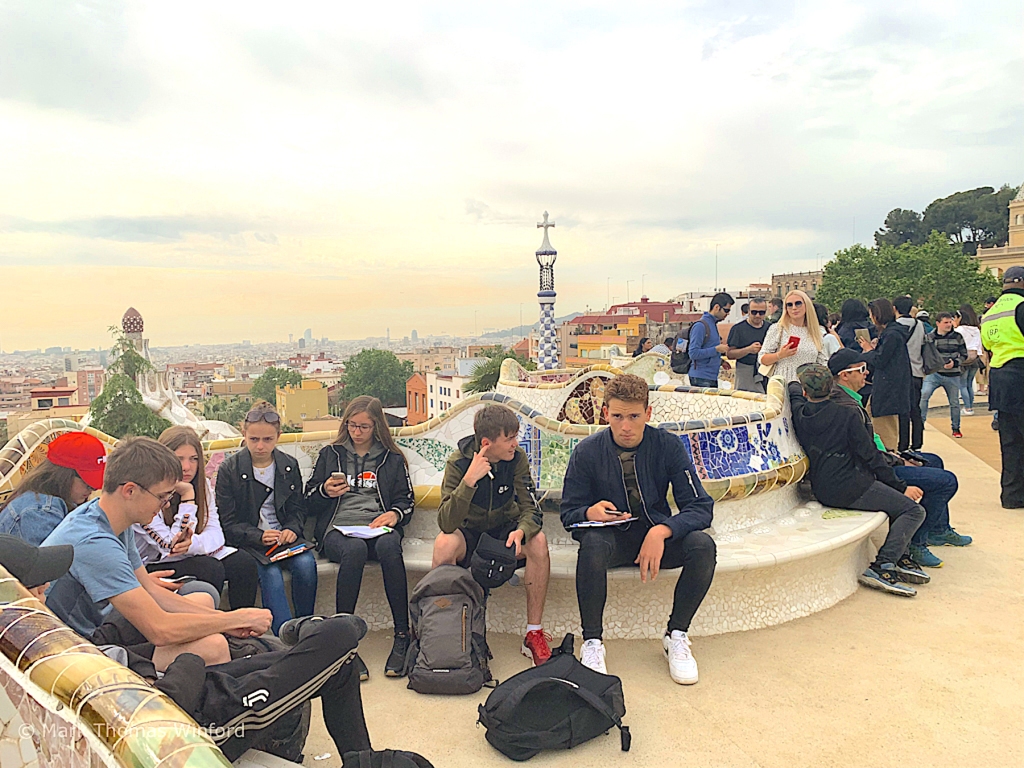
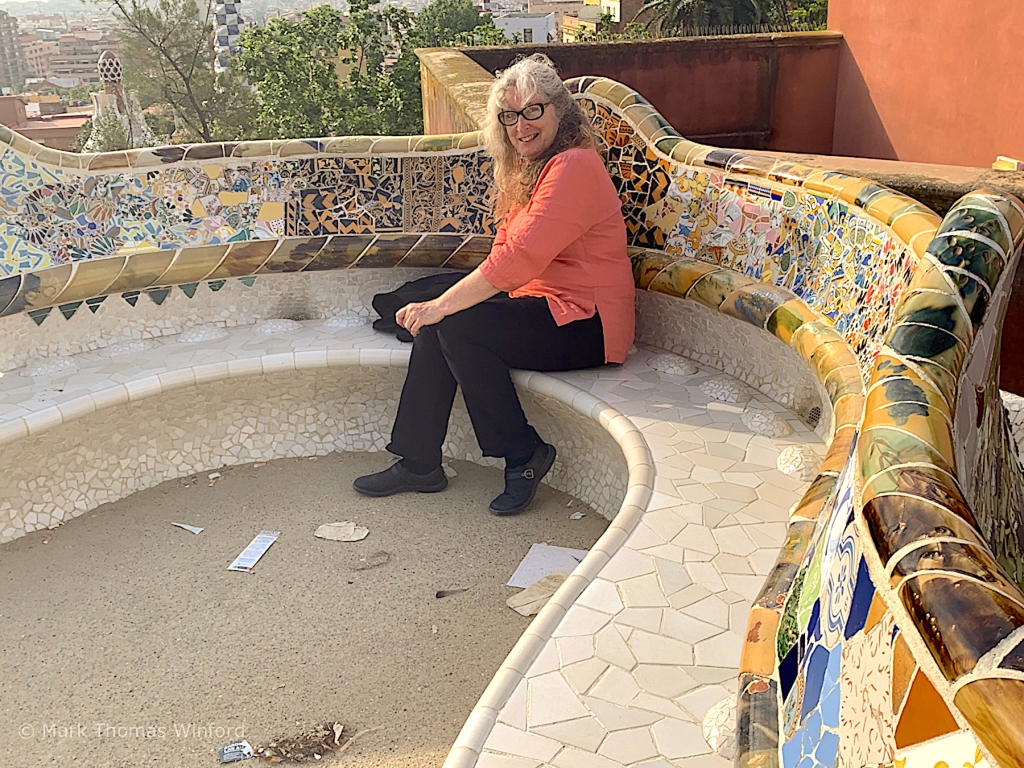

As one gradually makes one’s way uphill through the Park, one encounters heavy stone columns supporting the many roadways which were to serve the upscale residential lots, which were never realized. “Roadways around the park to service the intended houses were designed by Gaudí as structures jutting out from the steep hillside or running on viaducts, with separate footpaths in arcades formed under these structures. This minimized the intrusion of the roads, and Gaudí designed them using local stone in a way that integrates them closely into the landscape. His structures echo natural forms, with columns like tree trunks supporting branching vaulting under the roadway, and the curves of vaulting and alignment of sloping column.”


A favorite of ours was the stone column in the shape suggestive of a washerwoman carrying a basket of laundry on her head. Obviously, Gaudí’s craftsmen had fun executing his designs! The heavy stone collonaded walkways have columns that are both straight and tilted. There are even undulating tops and stone spires and built-in planters for agave and succulents.

The whole of Park Güell is set in a very natural setting. Making our way back down the hill from the top, we admired the vast native plant gardens, especially those surrounding what became Gaudí’s own home, which is now the Casa-Museu Gaudí.
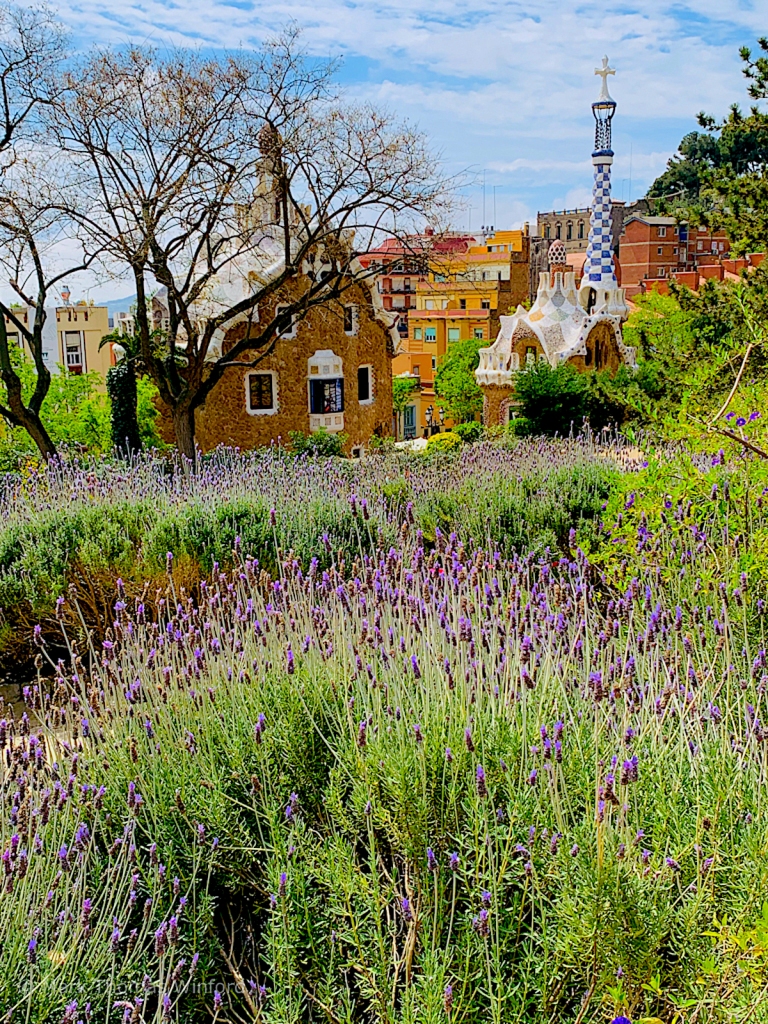
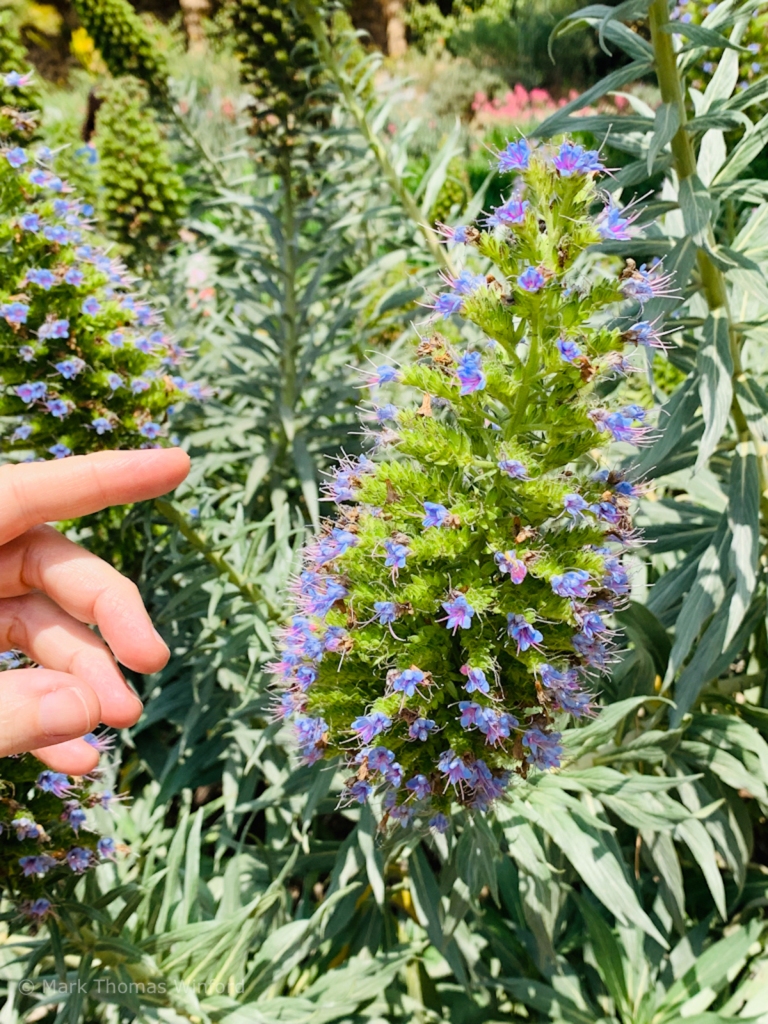
The Gaudí house museum was a great space. I especially loved the views of the monumental staircase leading up to the hypostyle hall and, in particular, a cobalt blue plaster wall. This museum had more catenary arch models, simple brass ergonomic door pulls and examples of Gaudí‘s furniture.


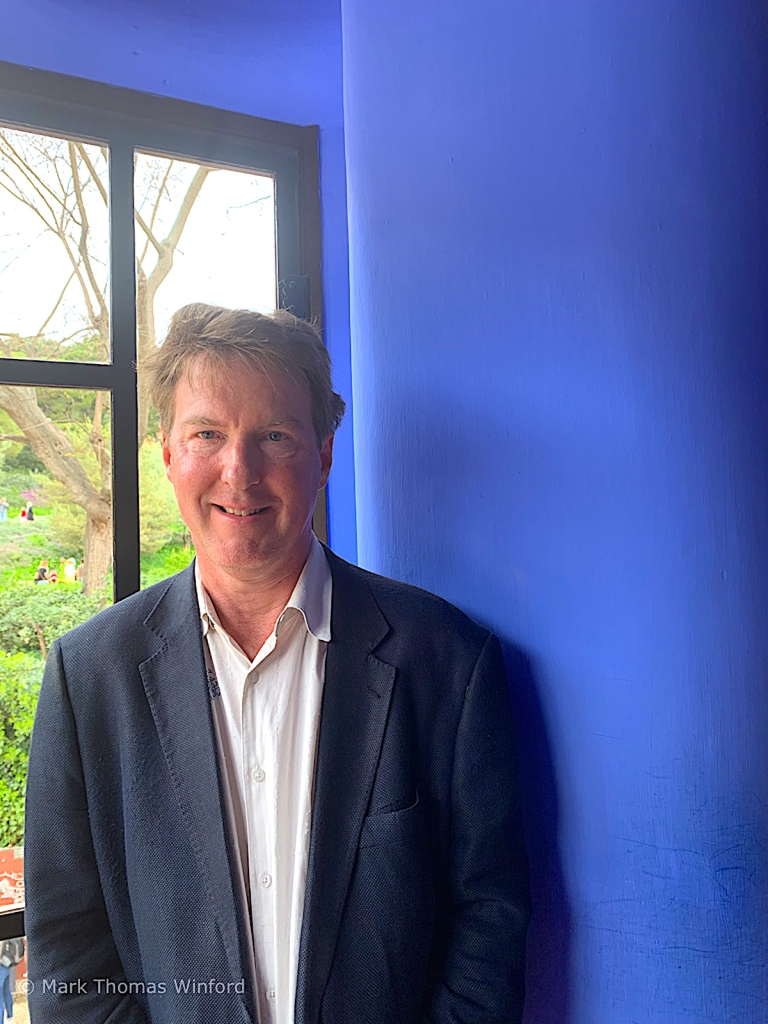
I like the quote about Gaudí we found in the museum:
“Gaudí was short and had a tangled beard, not overly long. His eyes had the color and transparency of the dawning sky. The sweetest smile was ever on his lips, but before presumptuous fools it became mocking, wounding like a dart. He often expressed himself – vehemently flaring up. That was the fire that he carried within.” Joaquin Civera Sormeni, 1964.
There was a nice sketch of Gaudí at work – such concentration. There were also nice sketches of his for furniture designs.
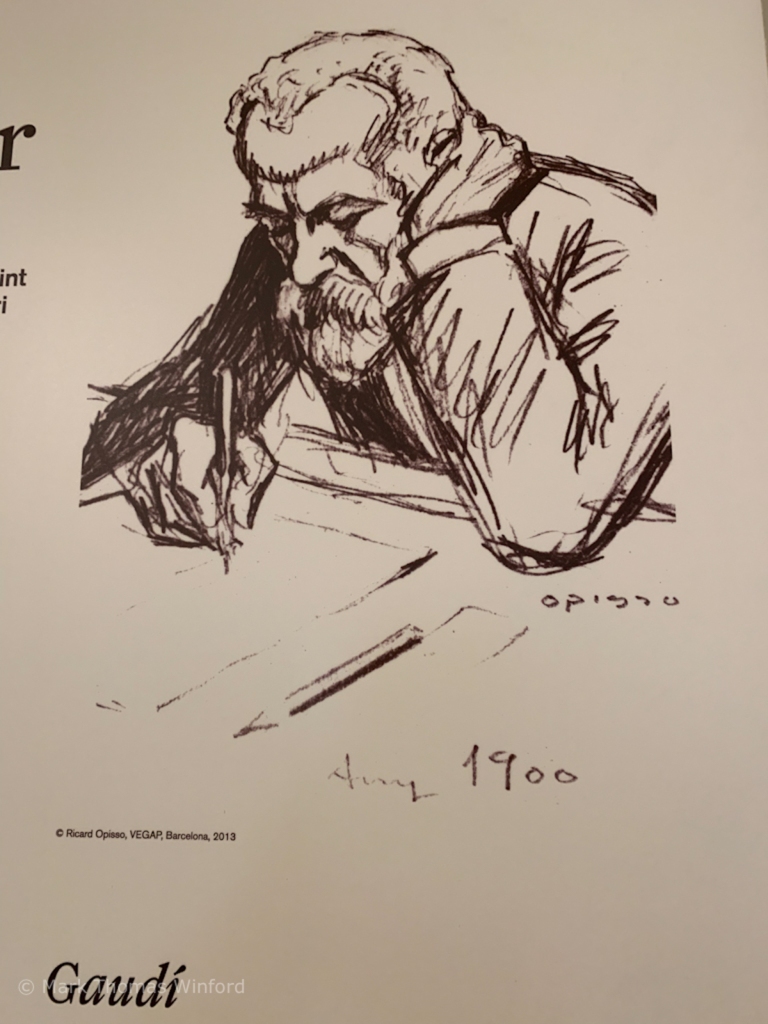
After Park Güell, we wandered back down to the Casa Milà area to dine at a tapas restaurant that G. recommended, Ciudad Condal, where we sat on a breezy terrace right in the middle of the Rambla Catalunya. We shared chicken croquettes, shrimp, squid and squash blossoms. Oh, and of course we had refreshing sangria.

